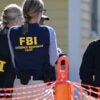In a recent test at the Minneapolis-St. Paul airport, the Transportation Security Administration failed to detect 94 percent of illicit items that actors smuggled through security screening that included fake explosives, weapons, and drugs.
This egregious performance comes at the same time that the Department of Homeland Security is requiring international airports around the world to comply with increasingly stringent security requirements.
As the latest instance in a history of administration failures, one is reminded of the 2015 “Red Team” tests in which the Transportation Security Administration failed to uncover 96 percent of illegal contraband that passed through its screening procedures.
The Daily Signal depends on the support of readers like you. Donate now
Continuing to fail and hoping for different outcomes is unacceptable—it is time for Congress to make a change. The TSA should be privatized and the Screening Partnership Program and Canadian public-private partnership model provide excellent alternatives to emulate.
The TSA is currently responsible for screening passengers and cargo on flights originating in the U.S.
Despite large increases in funding toward these measures since 9/11, the TSA still struggles to provide effective and efficient screening services. In 2016, airports across the country experienced long wait times for travelers that left many contemplating alternative options to the existing system.
To combat this problem, the administration tried hiring additional officers and paying more for overtime, but these measures go to show the struggle the administration faces in managing its workforce and keeping costs down.
The TSA model also fundamentally counteracts prudent governance. The TSA is the regulator for aviation security, but on the other hand, is also the screener that must comply with the regulations it produces for itself. To negate this conflict of interests, provide better service, and more cost-effective security, alternatives must be considered.
The Screening Partnership Program substitutes private screeners with Transportation Security Administration oversight in place of federal administration screeners.
The program also increases productivity and security while decreasing costs. A study by the House Transportation and Infrastructure Committee in 2011 found that Screening Partnership Program screening at San Francisco was up to 65 percent more efficient than its federal counterpart’s screening at Los Angeles.
While some may have concerns about private security, if a private contractor fails to meet satisfactory safety standards, they can be easily replaced. The same cannot be said of the Transportation Security Administration.
Another viable option is to emulate Canada’s public-private partnership model in which the government establishes rules for aviation security and a government aviation company contracts out to private companies to handle the screening workforce.
This model is both more effective and less costly than the one currently in place in the U.S.
From 2005 to 2014, Canada spent 40 percent less per capita on aviation security than the U.S. and over the same period, Canada spent approximately 15 percent less per traveler than the U.S.
Privatizing the Transportation Security Administration would result in savings that could be reinvested in more effective homeland security programs that are currently underfunded, and it could improve aviation security across the U.S. as a whole.






























